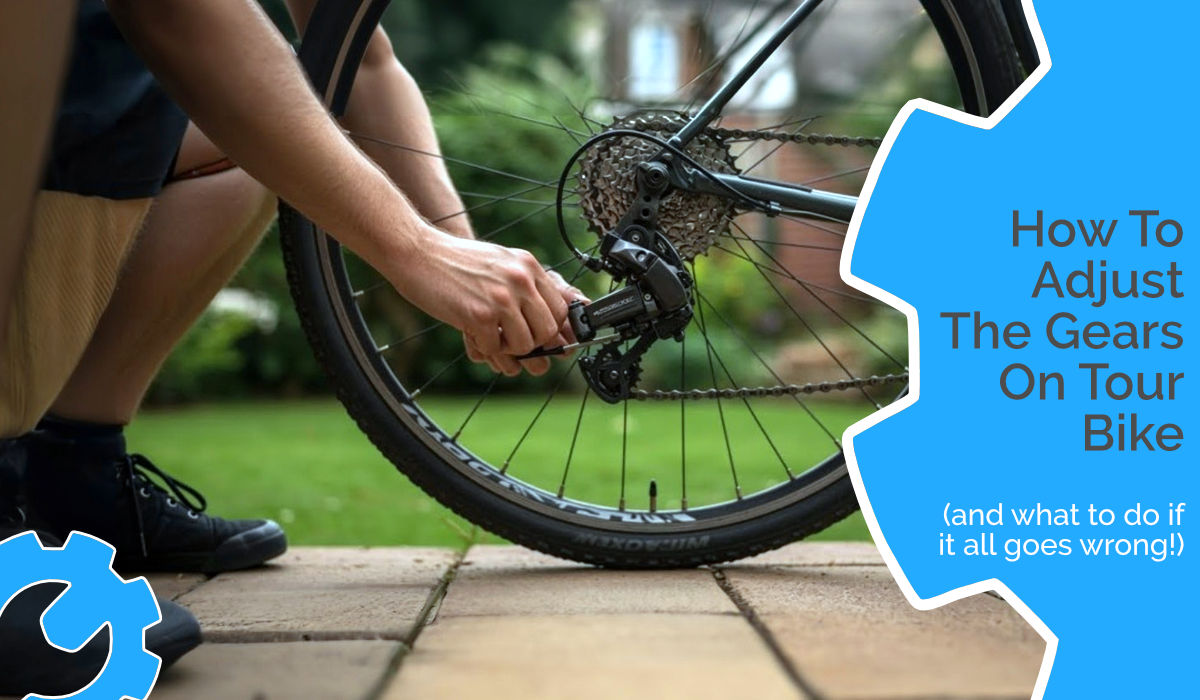How To Tune Your Bike Gears
The birds are singing, the days are longer, and that familiar warmth is finally back in the air! Here in Belfast, we know how precious those sunny days are, and what better way to enjoy them than hopping on your trusty bicycle?
But before you set off on your summer adventures, pulling your bike out of the shed after a long winter slumber might reveal a few cobwebs – both literal and mechanical. One of the most crucial things to address to ensure smooth and enjoyable rides is your gears.
Imagine this: you're cruising along the Lagan Towpath, the sun on your face, and suddenly your chain starts skipping, grinding, or refusing to shift. Not exactly the idyllic scene you were hoping for, right? A poorly tuned drivetrain can turn a pleasant cycle into a frustrating workout.
That's where we at Bike Spanner in Belfast come in! We're passionate about keeping your wheels turning smoothly all season long. While we're always here to provide expert gear tuning and full bike servicing, we also believe in empowering you with some basic maintenance knowledge.
So, if you're dusting off your bike and thinking about hitting the road, let's talk gears. A quick tune-up can make a world of difference. Here's a simple guide to adjusting the gears on a typical bike with Shimano components:
A Basic Guide to Tuning Your Shimano Gears
What you'll need:
- A Phillips head screwdriver
- Possibly a small Allen key set (usually 2mm or 2.5mm)
- A clean rag
- Some chain lubricant
The Process:
-
Clean Your Chain and Cassette: Before you start adjusting anything, give your chain and the rear cassette (the set of sprockets on your back wheel) a good clean with a rag. Old, gritty lubricant can significantly impact shifting performance. Apply a fresh, light coat of chain lubricant afterwards.
-
Identify the Limit Screws: Look at your rear derailleur (the mechanism that moves your chain between gears). You'll find two small screws, usually marked with an "H" and an "L".
- "H" (High): This screw limits the derailleur's movement into the smallest (highest speed) cog.
- "L" (Low): This screw limits the derailleur's movement into the largest (lowest speed) cog.
- Adjust the High Limit ("H") Screw:
- Shift your chain onto the smallest cog at the rear and the largest chainring at the front.
- Look at the alignment of the upper jockey wheel (the top wheel on the derailleur cage) with the smallest cog. It should be directly underneath or very slightly outboard.
- Use the "H" screw to adjust this alignment. Turning the screw clockwise will move the derailleur inwards, and counter-clockwise will move it outwards. The goal is for the chain to run smoothly without trying to fall off the smallest cog.
- Adjust the Low Limit ("L") Screw:
-
Shift your chain onto the largest cog at the rear and the smallest chainring at the front.
-
Again, check the alignment of the upper jockey wheel with the largest cog. It should be directly underneath or very slightly inboard.
-
Use the "L" screw to adjust this. Turning clockwise moves the derailleur inwards, and counter-clockwise moves it outwards. Ensure the chain shifts cleanly onto the largest cog without going past it and getting stuck in the spokes.
-
- Adjust Cable Tension (Barrel Adjuster): This is often the key to fine-tuning your shifting. You'll usually find a barrel adjuster:
-
On the rear derailleur cable where it enters the derailleur.
-
Sometimes also on your handlebar near the shifter.
-
If your chain is slow to shift to a larger (easier) cog: Turn the barrel adjuster counter-clockwise (unscrew it). This increases cable tension.
-
If your chain is slow to shift to a smaller (harder) cog or is skipping: Turn the barrel adjuster clockwise (screw it in). This decreases cable tension.
Make small adjustments and test the shifting through all the gears. Aim for smooth, quiet transitions both up and down the cassette.
- Front Derailleur Adjustment (Optional but Important for Smooth Front Shifting): While the focus here is the rear, a poorly adjusted front derailleur can also cause issues. Look for similar "H" and "L" limit screws on your front derailleur. The goal is to position the derailleur cage so it guides the chain smoothly between the chainrings without rubbing in the highest or lowest gear combinations. You may also find a barrel adjuster on the front derailleur cable.
When to Call the Experts (Bike Spanner!)
While this guide covers basic adjustments, some gear issues are more complex. Don't hesitate to bring your bike to Bike Spanner in Belfast if you experience:
- Bent derailleur hanger
- Worn chain or cassette
- Significant difficulty in achieving smooth shifting
- You're unsure about any part of the process
- Enjoy the Belfast Sunshine on Two Wheels!
